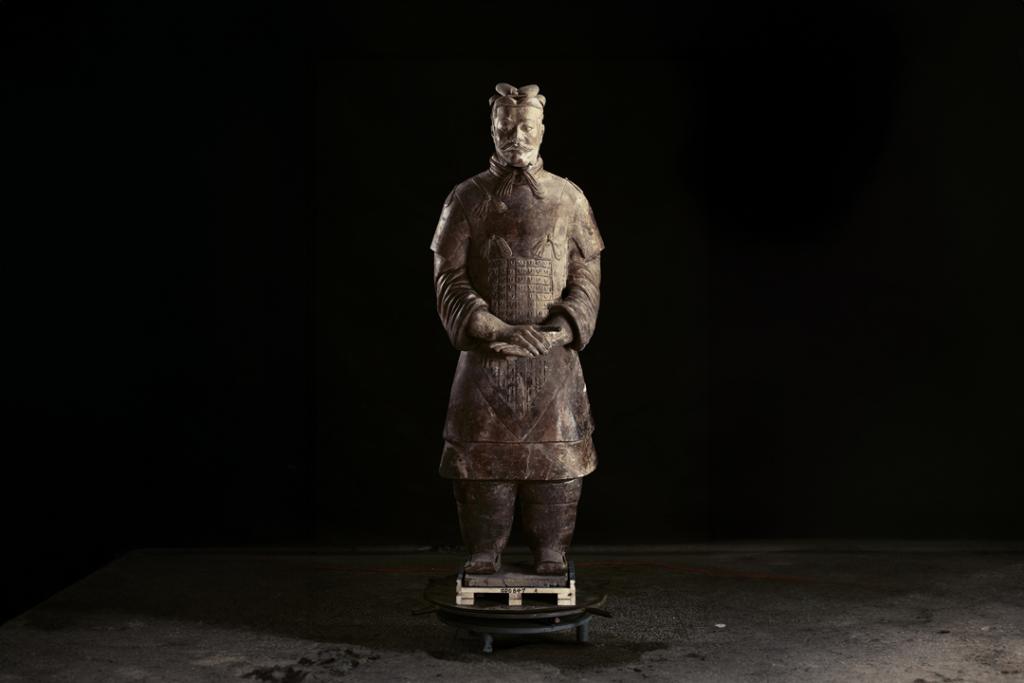China's First Emperor and the Terracotta Warriors: in numbers
Delve into some of the astonishing numbers that make up the story of China's First Emperor and his world-famous burial site.


China's First Emperor, Qin Shi Huang
1974
Shaped like a pyramid and clearly visible above ground on the outskirts of China's ancient capital Xi'an, the tomb mound of China's First Emperor has been well-known for more than 2,000 years. Almost everything we think we know about it comes from the historian Sima Qian, writing a century later in the early Han Dynasty. Curiously though, his writings contain no mention of the vast terracotta army guarding the Emperor's tomb and so their chance discovery on 29 March 1974 surprised the world.
13 years
The future First Emperor - then a prince named Ying Zheng - was just 13 years old when he became King of the Qin state in 246 BC. Remarkably, in just over a decade he overpowered the six remaining independent kingdoms of the Late Warring States Period (the Han, Zhao, Wei, Chu, Yan and Qi), declaring himself Qin Shi Huang, First Emperor of China, in 221 BC. According to Sima Qian, construction of the Emperor's mausoleum began soon after he ascended the throne as King of Qin, whilst modern archaeological surveys suggest the scale and complexity of the site grew considerably when he became First Emperor.

A visualisation of Qin Shi Huang's tomb mound. Image courtesy of Emperor Qin Shi Huang’s Mausoleum Site Museum.
5,000 kilometres
Stretching about 5,000 kilometres, the Great Wall of the Qin Dynasty was one of many ambitious construction projects completed during the First Emperor's reign. Made of compressed earth, the wall connected, lengthened and fortified the pre-existing walls built by individual states during pre-unified times to create a single defensive system against northern tribes. With some sections remaining today, the wall was extended in later dynasties to become the Great Wall of China and stretches over 20,000 kilometres.
200 times bigger
Spanning 56 square kilometres, Qin Shi Huang's burial site is the biggest-known on earth and is almost 200 times bigger than the Valley of the Kings in Egypt. Poised for battle to protect the Emperor in his afterlife, the terracotta warriors are buried in three pits to the east of the Emperor's mausoleum. A fourth pit has been left empty, suggesting the Emperor died before his immortal army could be completed.

General Qin Dyansty (221-206 BC), Emperor Qin Shihuang's Mausoleum Site Museum. Image © Mr. Ziyu Qiu.
1.8 metres
Standing at an average of 1.8 metres, the life-size terracotta warriors are far taller than an average citizen of the Qin Dynasty would have been. Incredibly, each warrior also weighs between 110 and 300 kilos. Not surprising then, that archaeologists estimate the creation of the warriors alone - who are thought to number almost 8,000 - would have taken at least 10 years to complete.
600 pits
The scale of the terracotta army is even more impressive when you consider it is only a small part of the First Emperor's grand preparations for the afterlife. Designed like a microcosm of his earthly world, more than 600 pits to date have been identified across the burial site. Only a tiny number have been excavated so far, revealing a trove of riches including armour, chariots, terracotta musicians, cauldrons and weapons so that in death, as in life, the Emperor had everything he needed to rule.
700,000 labourers
In a monumental feat of engineering and organisation, an estimated 700,000 labourers from all corners of the Empire toiled for almost 40 years to construct the Emperor's tomb complex. Work even continued after the Emperor's unexpected death at the age of 49 in 210 BC. In the 1980s, 42 mass graves were uncovered near the mausoleum, and archaeologists believe these belong to the workers who were buried to keep the secrets of the First Emperor's underground kingdom once it was completed.
15 years
For all the elaborate preparations the First Emperor made to rule eternally, his Qin Dynasty collapsed after only 15 years following a period of civil war. The popular revolt was finally quelled in 206 BC, and Liu Bang was proclaimed Emperor of the Han Dynasty. This makes it by far China's shortest ruling dynasty. Despite its brief tenure though, the Qin Dynasty's political, social and cultural achievements were immense and laid the foundations for the China we know today.
This article was originally created alongside our 2018 exhibition China's First Emperor and the Terracotta Warriors.
